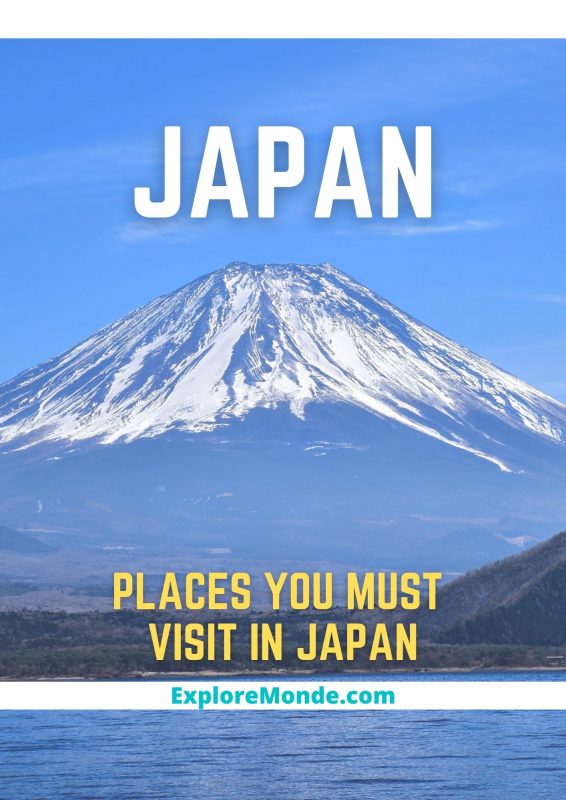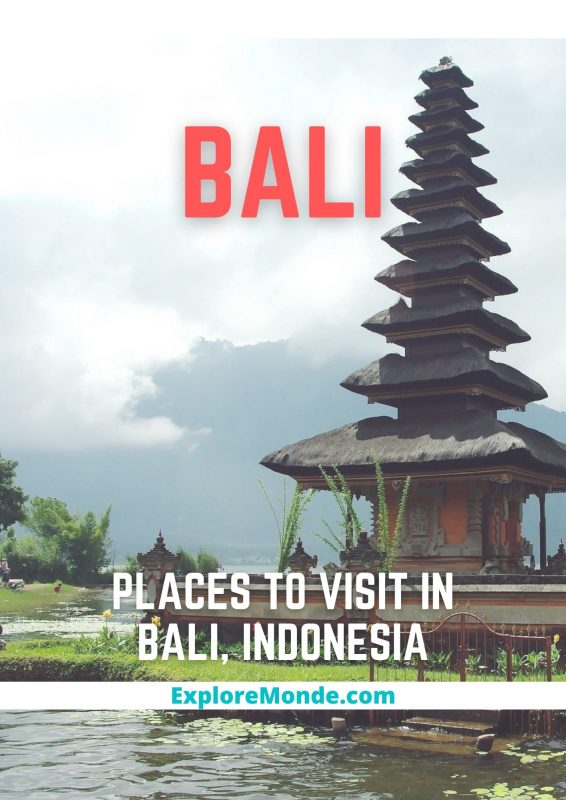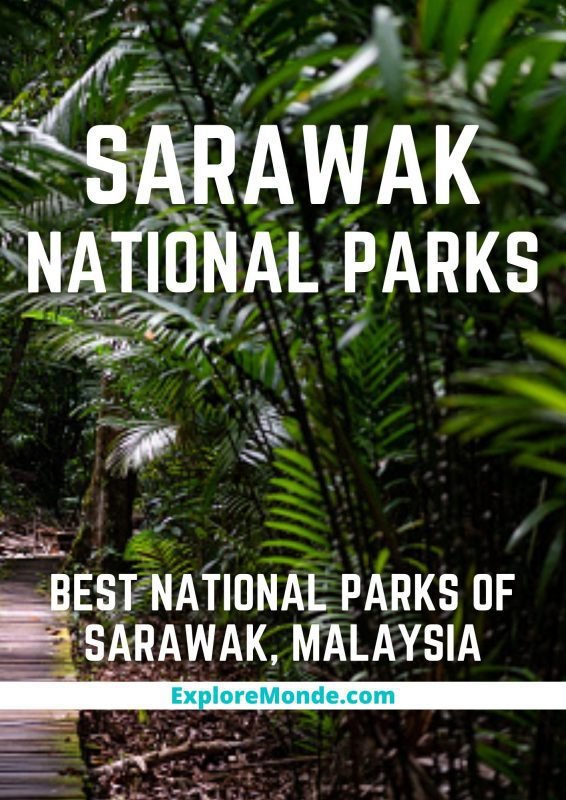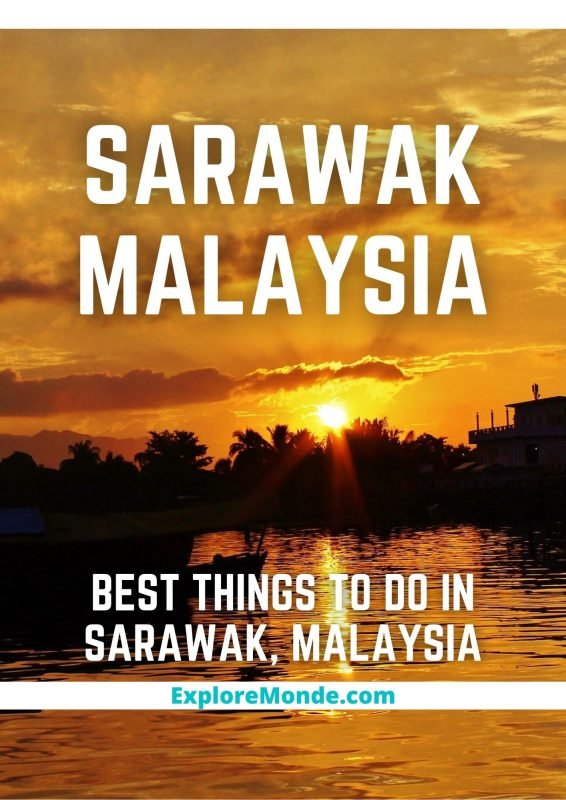This article has been reviewed by Laura and Sumeet, travel enthusiasts who have travelled to 40+ countries. (Follow @Ciao.Namaste on Youtube). Should you have any inquiries, please do not hesitate to contact at contact@exploremonde.com
The World Bank has reported that Japan’s tourism industry accounts for almost the entirety of its GDP. Tourism in Japan contributes approximately seven percent of the country’s GDP. Japan had over 25 million foreign visitors in 2017, making it one of the most visited countries in the world.
The state of Japan promotes tourism by promoting Japanese food and providing guidelines to learn how to eat it in a proper manner in which they won’t embarrass themselves. The number of tourists has increased in recent years which caused overcrowding of tourist attractions and transportation.
The only constructions allowed in certain parts of Tokyo are banks and hotels. Residents who want to build a house must first meet with the planning committee for their district before proceeding.
Many people mistake Japan as a solely Buddhist country, but in fact, there are many Christian churches throughout the country.
Let’s take a look at the 19 best things to do in Japan.
- 1. Mount Fuji
- 2. Tokyo – the Capital City of Japan
- 3. Kyoto – the Former Capital City of Japan
- 4. Takayama – the City of Water
- 5. Hakone, Japan
- 6. Kanazawa
- 7. Nikko
- 8. Koya-San (Mount Kōya)
- 9. Tsumago
- 10. Nara, Japan
- 11. Hiroshima
- 12. Osaka, Japan
- 13. Kinosaki Onsen
- 14. Naoshima Island
- 15. Okayama
- 16. Himeji Castle
- 17. Kawaguchiko
- 18. Shinkansen – The BULLET Train Ride
- 19. Kiso Valley, Japan
Best Things to do in Japan 1-10
1. Mount Fuji
Mount Fuji is a famous landmark in Japan. It has been featured in anime, manga, and video games all over the world, but few people know what it looks like up close. If you ever plan to go to Japan and see Mount Fuji for yourself, here are some things you can expect.
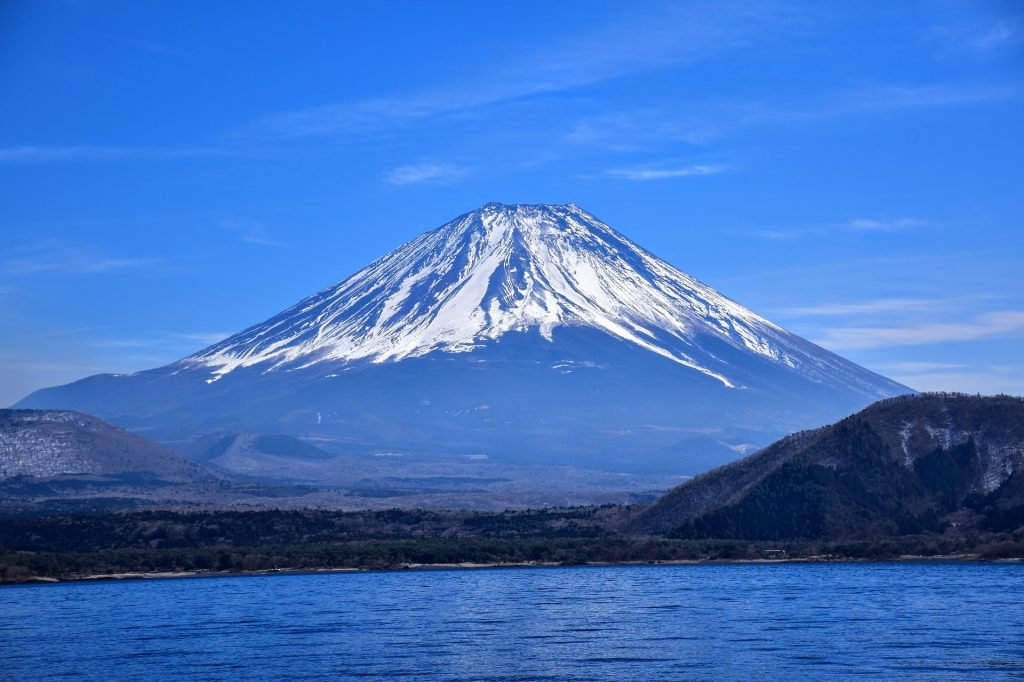
First of all, getting to Mount Fuji isn’t as easy as it may seem. It takes one full day to get up and down the mountain, and you will definitely want to bring comforts such as food, water, and extra clothes if you plan on going during the summer or spring seasons. It is also important that you check current weather conditions before planning your trip.
Mount Fuji is an active volcano, so you may want to consider checking the weather conditions before heading up the mountain. Luckily, you won’t have to worry about dying of smoke inhalation if you plan on visiting in wintertime.
Although Mount Fuji looks quite tall in pictures and videos, it isn’t too tall to climb in real life. The tallest mountain in Japan reaches an altitude of over 12,000 feet, so the climb shouldn’t be too difficult. It is important that climbers bring enough water and other supplies, however.
Once at Mount Fuji, there are many things that you can do. You can enjoy a picnic, rest on some rocks, or take pictures. At the very top, you will be able to see the rocky landscape far below, as well as the lush green forest leading up to where you are. Although it is recommended that climbers only stay half a day, you can spend as long as you need on the summit. It is important to keep an eye on the weather, however, because if there are high winds or thunderclouds, you may have to turn back.
Bestseller Drones
If you’re lucky enough, it is possible that you might even have a clear view of Mount Fuji’s crater. This is because many tourist activities forbid people from climbing close to the crater itself, so chances are you won’t be able to get a close view unless you work with the tour guides.
In Japan, Mount Fuji is considered one of the top three mountains to climb. The other two are Mount Tate and Mount Haku, both of which are significantly taller than Mount Fuji. Mount Fuji’s name even means ” the mount of heaven “, in honor of its beauty.
Overall, Mount Fuji is an excellent place to go if you plan on visiting Japan. Just make sure you prepare by bringing lots of water and other things, especially if you plan on going during the summer or spring seasons.
2. Tokyo – the Capital City of Japan
Tokyo is the capital city of Japan. It is a populous metropolis and the most populous metropolitan area in the world. Located on a major island in Japan, Tokyo has about 13.2 million residents. Tokyo is considered the economic and cultural center of Japan. It is also home to several of the most famous landmarks in Japan, which include the Tokyo Tower and the Imperial Palace of Tokyo.
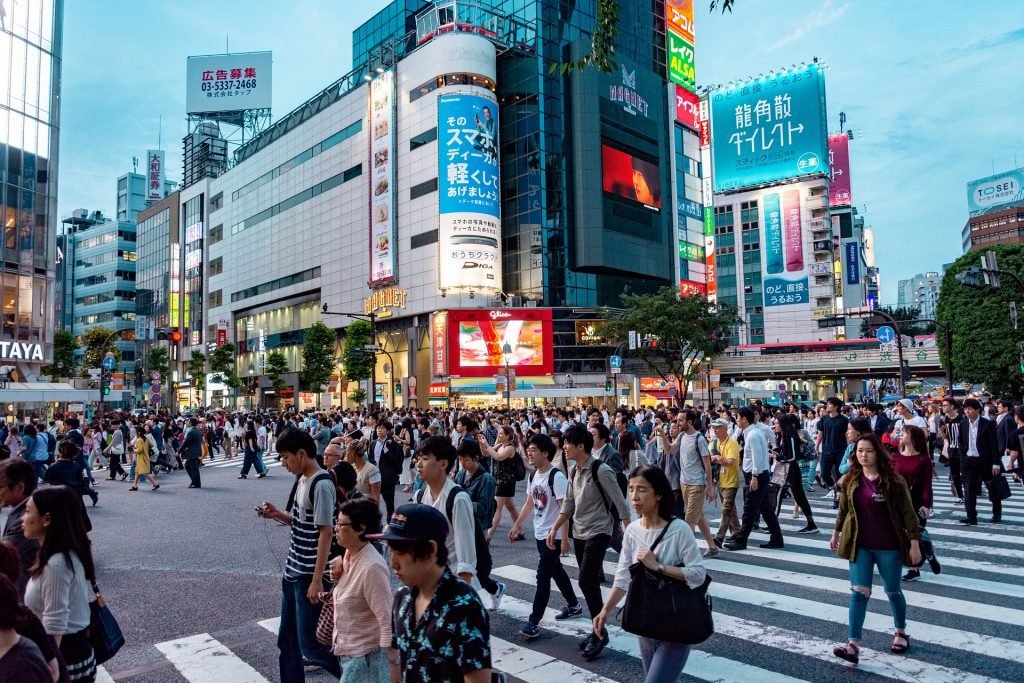
The metropolitan area of Tokyo is called the Tama Area, which is about 2,187 square miles in size. The Tama Area has about 7,100,000 residents.
Bestseller GoPro Selfie Sticks
Tokyo is located near the center of mainland Honshu, facing the Pacific Ocean. The Edo River originates in Mount Sanosaka and flows into Tokyo Bay to the east. Several other rivers also flow through Tokyo, including the Tachiai, Sumida, and Arakawa Rivers.
Tokyo has a humid subtropical climate that is affected by Siberian High, which brings cool northwesterly winds to Japan. Tokyo has hot, humid summers and cool winters. Temperatures usually range from 50 degrees Fahrenheit to 90 degrees Fahrenheit during the day in summer, and between 30 degrees Fahrenheit and 60 degrees Fahrenheit on winter days. Tokyo experiences heavy rainfall nearly all year long, with the heaviest rains falling in June and September.
Tokyo is home to several large companies, including Toyota, Toshiba, and Honda. Some of Japan’s most important industries are headquartered in Tokyo. These include the electronics industry, publishing, financial services, and retail. Many of Japan’s best universities are also located in Tokyo.
Tokyo is the transportation center of Japan, and it is a highly developed and modern city. Transportation systems include rail, subway, and bus services. Within the city, there are several rapid transit systems, including the Tokyo Metro and JR Yamanote Line. The JR Yamanote Line carries more than 3 million passengers every day.
Tokyo is a popular destination for visitors from all over the world. Tokyo has many museums, restaurants, and other tourist attractions. Some of the most famous museums in Tokyo include the National Museum of Nature and Science, The National Art Center, Mori Art Museum, and the Edo-Tokyo Museum. Many tourists visit Tokyo to see some of Japan’s most famous landmarks, including the Tokyo Tower, Meiji Jingu Shrine, and the Imperial Palace of Tokyo.
Bestseller Copper Water Bottles
Tokyo is also considered a major shopping center in Japan. Many tourists go to Tokyo for this reason. Some of the popular places to shop are Ginza, Omotesando, and Harajuku. There are also several thousand shops throughout the city.
Tokyo is the gateway to many other locations in Japan, including Osaka, Kobe, and Kyoto.
3. Kyoto – the Former Capital City of Japan
Kyoto, the former capital of Japan is very different from Tokyo. Kyoto’s culture is more traditional and it has many temples and shrines. It also has a lot more green space than other cities in Japan.
The city of Kyoto itself has about 1 million people within its borders (all municipalities are included). If you take out the surrounding towns, the population is closer to 800,000. The city of Kyoto has 4 administrative Districts: Minami-ku, Miyakawa-ku, Sakyō-ku and Nishi-Ku. The city borders in a circle shape with four points with the river Kamogawa running through it from South to North.
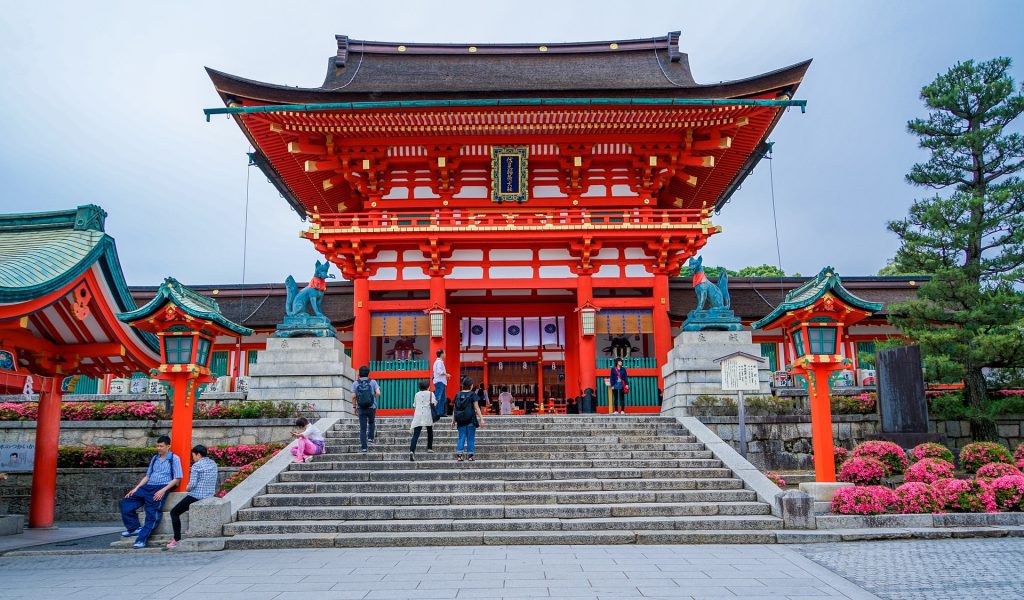
One of the most popular things to do in Kyoto is visiting the many temples and shrines. Some of these are listed below:
Bestseller Cupholder Bottles
- Toji Temple, a Buddhist temple built in 796.
- Sanjusangendo, a temple that contains 1001 statues of Kannon (Goddess of Mercy). The building itself is a national treasure.
- Kinkaku-ji, a Zen Buddhist Temple with a pond and several walk ways. It is most popular for the Golden Pavilion located in the back of the complex.
- Kyoto Tower, one of many towers built in Kyoto after Tokyo’s Sky Tree was completed. For the view from near the top you can see almost all of Kyoto.
- Kiyomizu-dera, a Buddhist temple that is dedicated to Kannon (Goddess of Mercy). The most popular part is the large wooden balcony over looking the city.
4. Takayama – the City of Water
Takayama, also known as the City of Water, is located about 100 kilometers Northwest of Nagoya in central Japan. The city is often visited on short tours of Japan. Takayama is filled with traditional Japanese houses called “machi-ya”, some over 100 years old. Many are still used as shops or homes by families who have lived in Takayama for generations. This gives the city a unique atmosphere that many say you won’t find anywhere else in Japan.
Takayama is also famous for its many festivals and traditional craftsmanship, which continue to this day. The most famous of these events is the Three-Day Fire Festival. During this festival, several giant bonfires are lit, and people dressed as devils patrol the streets throwing edamame (soybeans) at onlookers.
Takayama is a very popular tourist town, and you will certainly see many international visitors if you travel here during your visit to Japan. It is advisable to book rooms well ahead of time to avoid having nowhere to stay, especially around busy times such as Golden Week (late April through early May).
Quick pointers on Takayama:
- Many tourists visit Takayama
- The Three-Day Fire Festival is one of the popular festivals
- Takayama is filled with traditional Japanese houses called “machi-ya”
- You should book rooms in advance to avoid not having a place to stay around busy times
5. Hakone, Japan
Hakone is a city in Ashigarashimo District in Kanagawa Prefecture, Japan. It includes Hakone and Gora (after which the more developed resorts of Hakone and Gotemba are named). It is located west of Tokyo. The modern city of Hakone was formed on March 31, 2006, under the law for the reform of local governments.
As of June 1, 2013, the city had an estimated population of 20,204 and a population density was 196 persons per km². The total area is 104.33 km². The Hakone checkpoint on the historical Nakasendō highway connects it to Kyoto via Kanagawa Prefecture, Yamanashi Prefecture, and Shizuoka Prefecture.
Hakone is an active tourist destination in Japan, attracting roughly 2.6 million visitors annually. Hakone is notable for its onsen hot spring resorts. It is the source of the famous brand of mineral water named “Hakone Sengetsu”.
The area is also home to the Hakone Open Air Museum, an open-air museum with replicas of famous Japanese and international structures. The museum’s Traditional Crafts Street has shops selling local crafts.
Hakone consists of five traditional hot spring resorts along Lake Ashi (Ashinoko), all within the Fuji-Hakone-Izu National Park. The hot springs range from mildly alkaline (pH 8.4) to highly acidic (pH 3.6), with high concentrations of sulfur and iron, which contribute to their healing properties.
There are also numerous onsens that mix in with the natural hot springs fed by Lake Ashinoko. Hakone is famous for its hot springs and ‘onsen’ (Japanese hot spring baths). Hakone has over 20 onsen resorts.
The most popular of the onsens in Hakone are: Takaragawa Onsen, Owakudani Hot Spring, Kusatsu Onsen, Gora Onsen, Suwako Onsen, and Hakone Kowakien Yunessun. Hakone (or at least its onsens) is also known for being a “compathy”, or cure-all.
6. Kanazawa
Kanazawa is a city in Ishikawa Prefecture, Japan. Kanazawa is located in central Ishikawa Prefecture, on the coast of the Sea of Japan. It has a population of 462,672 (June 2010). The total area is 461.26 km², with a coastline that measures 35.25 km in length. It borders the municipalities of Noto and Tsubata to the north; Nomi and Komatsu to the east; Nanao and Wajima to the south; and Takayama to the west. It was the capital city of Ishikawa Prefecture until it was replaced by Kaga in 2009 when the prefectural capital moved to its present location in Kanazawa Ward following a referendum.
Kanazawa traces its history back more than 1,200 years when it served as the capital of the Kaga Domain. It was a thriving city during the Edo period as a castle town, post station, and seat of government until the Meiji Restoration when it became part of Nanao Prefecture.
Kanazawa is home to countless historically significant people or places, including Erasmus who set up a Catholic mission, the great haiku poet Matsuo Bashō who wrote his famous poem about the city, and the former prime minister of Japan Naoto Kan whose political roots were established here.
The city is built around a large network of waterways called the “canal town”, which served as a vital transportation thoroughfare during its zenith in the Edo Period. Most of the streets run parallel to these canals, and a large number of traditional houses have been preserved in the old merchant quarters.
Bestseller Drones
A noteworthy amount of well-preserved canals remain from the Edo period. These are protected by national government laws and efforts have been made to preserve them for centuries to come.
Visitors can enjoy boat tours of the waterways by day and very atmospheric evening cruises during the summer months. The many traditional buildings in the old city are particularly attractive after dark when they are lit up, giving the whole area an almost magical atmosphere.
Kanazawa has a humid subtropical climate (Köppen climate classification “Cfa”), albeit having very cold winters with moderate snowfall still allowing for it to remain a city dominated by its summer green, with hot, humid summers due to seasonal lag. The winter is somewhat moderated by the coast.
7. Nikko
Nikko, Japan is located in Nikko National Park. The national park spreads over 1,278 square miles of mountainous terrain. This makes it difficult to access all areas of the park by road. Since June 2012, there are four different types of buses that tourists can take to travel through the park safely and comfortably. There are also trains that travel through the park.
The national park is home to a wide range of flora and fauna, including brown bears. Tourists that venture into this area are expected to be careful and responsible when observing nature, as well as bringing bear deterrents such as bells with them at all times. Other mammals that reside in the national park include deer, sika deer, and Japanese serow.
There are also many waterfalls in the national park. The Ōwakudani valley is home to one of these falls. This fall is hot and acidic and can reach steaming temperatures as high as 98°C (208°F). Wildlife around this area includes mandarin ducks, Japanese dippers, and Japanese scops owls.
A 200-meter long tunnel can be found on the Senjogahara coastal flatlands of Nikko. This area is not only known for its high winds, but also for having many mosquitoes that are attracted to light. The Tashirojima island within the national park is also home to many mosquitoes and cats. These cats help keep the island free from mice, which would otherwise interfere with the breeding of the bird population.
The Urami-ga-Taki waterfall can be found in this national park as well. This fall originates from Lake Yunoko and descends for three-quarters of a mile. This fall has a volume of 2,070 cubic meters per minute.
The Nikko national park is also known for being the home to many temples and shrines.
The most popular shrine within the park is the Toshogu Shrine which was built in 1636 by Tokugawa Ieyasu, founder of the Tokugawa Shogunate. This shrine is home to three buildings, as well as a stone bridge that spans 13 meters across the Daiya River.
Following this shrine is the Futarasan Shrine which was built in 782 AD and dedicated to Yakushi Nyorai. It is considered one of Nikko’s oldest shrines and it has been rebuilt several times. This shrine is also home to many graves of the Tokugawa family, as well as where Tokugawa Iemitsu was laid to rest upon his death in 1651.
The third set of buildings within the Toshogu Shrine is known as the mausoleum of Tokugawa Iemitsu and Sūden. The mausoleum of Tokugawa Iemitsu contains a large stone coffin, as well as the coffins of forty-eight of his favorite concubines. Within the shrine is a wooden statue of a sleeping cat that is said to have been carved by Hidari Jingoro in 1617.
The last set of buildings within the national park is the three Kegon Waterfall Buddhist Temples. Each temple is dedicated to each of the three sacred falls in Nikko, which are Kegon Falls, Rakushi Falls, and Shōjiki Falls. The first temple that was built on this site was completed in 744 AD. It is said that this temple is the oldest of its kind in Japan.
Tourists can enjoy a range of different activities within Nikko National Park, such as hiking and visiting the many waterfalls and shrines that reside there. The area also has an amusement park nearby called “Kirifuri Water Park”, which opened in 1972, where visitors can go to enjoy games or relax by the water. There are also many opportunities for tourists to experience Nikko’s traditional culture, such as seeing a Samurai procession during springtime or viewing the five-storied pagoda at the Nikko Tosho-gu Shrine.
8. Koya-San (Mount Kōya)
Koya-San (Mount Kōya) is one of the most important centers of Buddhist culture in Japan. It is situated on the border between Osaka and Wakayama prefecture, southwest of Kyoto.
Many pilgrims come to Koyasan for spiritual training at its many temples, which are often placed atop mountains covered by dense forests. Hardly any cars or other transportation vehicles are used, and the only way to get around is on foot.
The buildings in Koyasan were made with wood without using nails since it was believed that doing so would harm trees and prevent them from growing. Thus you can see many large wooden structures in the mountains.
There are many temples in Koyasan, the main attraction is the Kongobu-Ji Temple.
Kongoubu-Ji was founded in 816 by Ganjin, a Chinese Buddhist monk who had been invited to Japan and that had taught Buddhism in several provinces of Japan. He and his disciples erected many buildings and grew their influence until it reached its peak in the 12th century. Since then, it has been forced into decline several times by fires and wars, but always managed to come back stronger than before.
Kongoubu-Ji’s main shrine is the Yomei-mon Gate. It was built in 1778 to replace an earlier gate that had been destroyed by fire. The gate is built in the same style as the main gate of Todai-Ji Temple in Nara.
There are many other temples around Koya-san, including Ekoin, Jison-in, Okunoin, and Misono. All have their own significance to Buddhists around the world.
- For example, Ekoin is famous for its huge Ginko tree in the middle of its compound. Legend has it that Kukai planted this tree when he was returning to the temple on his way back from China.
- Okunoin is known as the burial place of Kobo Daishi, who founded Koyasan. His mausoleum is a popular destination among visitors of the town.
- Misono contains important Buddhist statues and other items that were donated from around Japan to Kobo Daishi, including the Lukurio-ju, which holds a statue containing one of his teeth.
Koya-San is also known for its many different oni-themed statues and other works of art. Many oni statues were erected around Koyasan as a sign of respect for the first hero of Buddhism, Monju Bosatsu.
The different temples in Koya-san have different rules on what can be brought into their compounds. For example, Ekoin has a strict dress code that forbids flip-flops, miniskirts, low necklines, and the like. Other temples allow you to walk around their compounds without shoes or in socks. Other temples can be accessed only during certain hours of the day.
Many people who come to Koyasan go on a pilgrimage around its temples. After visiting several temples, they come back to Kongoubu-Ji in the evening for the most spectacular mountain views of Koyasan.
9. Tsumago
Tsumago is a small town in the Nagano prefecture in Japan and has an area of 4.6 square kilometers (1.8 sq mi). It has about 1,000 inhabitants (as of April 1, 2015), making it one of the largest towns in the region. Because it is considered to be well-preserved, the area was named a Historic Site in December 1995.
The town is located along the Magome–Tsumago Sengen-route, which has been made into a biking tour. It is part of Japan’s Nakasendō, one of its historic roads that formed an important communication route between the northern and central parts of Honshu during the Edo period. This historic road is now one of the UNESCO World Heritage Sites.
Tsuga Castle, also known as Katsuyama Castle was built in 1561 by Gamo Tsugutada and Gamo Harukazu to protect the area, but it was destroyed when Oda Nobunaga invaded in 1581.
The following points of interest are located within the town:
- Tsumago Castle Ruins
- Tsumago Jinya (Tsumago’s Former Office, now a museum)
- Rice Paddy and Dry Landscape Garden
- Magome Post Station (includes Magome Stamp Museum and the second half of the Nakasendo)
- Tsumago’s main street, roads, and stores. This is where you can get food, souvenirs or visit cafes.
- Tsumago Folklore Museum (opened in 1998). Located on the second floor of the town community center (housed in an older building), it displays six kinds of rooms from the Edo period, including a kitchen, a sitting room, and a middle-class farmer’s room.
- Mount Tonosawa
- Magome Pass (Sangaku)
- Magome Pass Museum
- Tsumago is also home to a number of hiking trails within its limits and going beyond it:
- Magome-tozan trail
- Tsumago to Kiso-Fukushima trail (8–9 hours)
10. Nara, Japan
Nara, Japan is a city of over 1 million people in the Kansai region. Being so close to Kyoto makes it an ideal day trip destination. It is a very unique city in its own right, with a thriving local culture and many interesting sites to see.
Nara was the capital of Japan from 710-794. This means that Nara has been carefully managed and preserved for over 1300 years. It must have been an impressive sight in its day, but that is nothing compared to today.
There are many beautiful sights in Nara, but one of the most popular is Todai-ji. This huge temple has an awe-inspiring giant Buddha image inside called the Daibutsu (Great Buddha). It was built in 752 and brought here from Korea, so it is truly an impressive sight.
There is also a deer park in Nara. It is home to over 1200 Sika Deer that freely roam around the area eating from people’s hands and begging for treats. These deer are very tame, but it is still best to give them food from a distance as they will sometimes get aggressive if you get too close with your hand.
Further away from the center of Nara is the Kasuga shrine, an ancient Shinto shrine surrounded by beautiful forests. It is also home to thousands of ancient lanterns and impressive stone statues. There are many other cultural sites and temples in Nara to further explore as well if time allows.
Nara truly has something for everyone.
Best Things to do in Japan 11 and beyond
11. Hiroshima
Hiroshima is a city in Japan. It has a population of about 1 million people, and it is the capital city of Hiroshima Prefecture. The prefecture has a total population of around 2.3 million people.
The city was founded on April 1589 by Mori Terumoto, who lost to Tokugawa Ieyasu in the battle of Sekigahara. The city now has a population of about 1 million people and is famous for its location near the hypocentre of the atomic bomb explosion on August 6th, 1945.
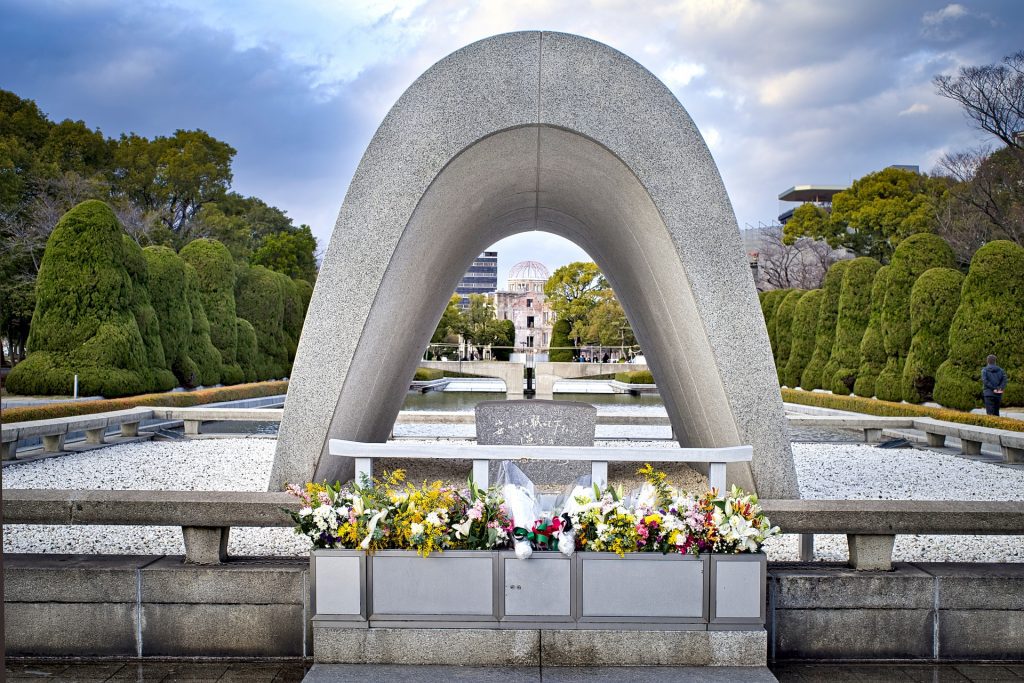
Hiroshima is well known around the world as being one of the sites hit by an atomic bomb during the Second World War.
The city is also well known for its park, called Peace Memorial Park. The park was once the site of many buildings that were destroyed by the atomic bomb. A memorial has been built in the park to honor all who died during these events. The memorial has a museum nearby if you would like to learn more about the events of World War 2 and the bombing.
Another well-known attraction is the Genbaku Dome, which was once an industrial promotion hall called the Hiroshima Prefectural Product Exhibition Hall. It was designed by Czech architect Jan Letzel in 1915. This building survived the atomic bomb explosion and now stands as a reminder of what happened during the bombing.
Hiroshima has a humid subtropical climate that is very similar to most major cities in Japan. The city also gets about 20 inches of rain each year, and there are around 120 days when it snows throughout the year. It averages around 12F in winter. The weather during summer can get up to around 90F, and this time of year is the most popular for tourists.
Hiroshima has a number of shopping districts that are well known throughout Japan. Naka-Dori Street is supposed to be one of the biggest shopping streets in all of Japan, and it runs from JR Hiroshima Station all the way up to Peace Memorial Park.
If you are in Hiroshima, then there is a lot to do around the city. One of the most popular places to go shopping is Naka-Dori Street. There is also an abundance of great restaurants and bars around the city that most tourists love. Some tourists also enjoy exploring Peace Memorial Park, which has the A-Bomb Dome in the middle of it.
The city is also known for its tourist attractions, like Hiroshima Castle (Hiroshima-jo), which is a concrete replica of the original castle that was once located there. The castle is now a museum and well know landmark in the area. Another popular destination is Miyajima Island, which has a beautiful shrine that is surrounded by lush forests.
There are also a number of festivals that happen in Hiroshima throughout the year, and most tourists enjoy visiting Hiroshima during these times. One of the most popular ones is called the Peace Memorial Ceremony. This ceremony takes place on August 6th each year to remember what happened on this day during World War 2. The ceremony involves people placing incense on the altar at 8:15 AM, which is the time when the first atomic bomb was dropped on Hiroshima during the war. The people also bow in silence for a few minutes and then release thousands of doves into the air to symbolize peace.
There are also many museums around the city so you can learn about what happened during World War 2, or you can just enjoy the sites and things to do in Hiroshima.
12. Osaka, Japan
Osaka is located in the Kansai region of Japan and has a population of about 2.7 million people. Osaka is served by Kansai International Airport, Itami Airport, Osaka International Airport, Kobe Airport, and others. Osaka is the sixth-largest city in Japan.
Osaka has a vibrant nightlife, with many designer bars and nightclubs to choose from. The food culture in Osaka is known for Makunouchi Bento (boxed lunch) and Kushikatsu (meat and vegetables on skewers). Osaka has 10 major city centers.
Quick Pointers on Osaka:
- Osaka’s Dōtonbori street of Osaka is a famous tourist spot with its large pedestrian walkway and designer shops including H&M, Gap, Adidas, and others.
- Namba city of Osaka is famous for shopping and dining at its Dōtonbori street which also has a large pedestrian walkway over it.
- Osaka Castle in Osaka is one of the most visited tourist locations in Japan.
13. Kinosaki Onsen
Kinosaki Onsen is a hot spring village in Japan. The hot springs have been drawing people to the area for over 1300 years and continue to be a popular attraction today. The town has over 30 public baths that use hot spring water, which is rich in sodium, calcium chloride, and potassium.
People can enjoy the hot springs both in their ryokans (traditional Japanese inns) and at the various bathhouses scattered throughout the town. Several of these popular baths offer unique features such as outdoor baths or even rotemburo (outdoor onsen).
The main street in Kinosaki Onsen is home to many traditional ryokans, gift shops selling local specialties and souvenirs, dining establishments for visitors both Japanese and foreign, as well as other services.
Kinosaki Onsen is located in Hyōgo Prefecture. The town’s train station serves the JR Kōbe Main Line. The station has two platforms that can be accessed through the same station gate. The main street in Kinosaki Onsen is located on the other side of this station building and leads to local attractions such as public baths, shops selling local specialties and souvenirs, traditional ryokans (inns), and more.
Kinosaki Onsen has been a popular destination for tourists from around the world, especially from the Kansai region of Japan. In 2006 this onsen town was listed as one of the 100 best hot spring towns in Japan by the Ministry of Land, Infrastructure, and Transport of Japan.
Kinosaki Onsen is located about 45 minutes away from Osaka Airport. There are also direct trains connecting Kinosaki Onsen to Tokyo Station. Buses are available which travel directly between the airport and the train station in Kinosaki Onsen. Kinosaki is located about an hour’s drive away from the popular resort town of Kobe.
Kinosaki is also famous for its numerous local specialties such as unokyu and wanko soba.
14. Naoshima Island
The island was once used for “takuhatsu” pilgrimage by Buddhists. The island is covered by citrus, tea, and mulberry plantations. The cultivation of amanatsu, a fruit similar to the mandarin orange, is the most important agricultural sector on Naoshima.
The island is known for its contemporary art museums such as the Chichu Art Museum and Lee Ufan Museum which have been built in beautiful natural sites with views of nature and traditional Japanese architecture.
The island has also received attention because of its unique and unconventional art installations which include outdoor sculptures, small gardens, and the “Art House Projects.”
Sculpture Park Benesse, established in 1989 by founder Kazuyo Sejima, is the site for contemporary art displays. The island has the architecture and design museum 21_21 Design Sight founded by actor and director Takeshi Kitano.
Other attractions on the island include the art-house project, various hotels, and restaurants with traditional Japanese cuisine. There are ferries that depart from Uno port on the mainland to Naoshima island.
15. Okayama
Okayama is a city in the Chūgoku region of Japan. The city was founded on June 1, 1889. Its name means “capital city” or “base town.”
Okayama has many interesting places to visit, for example, Okayama Castle is the only original castle in Japan to remain as originally built. It was proclaimed a national treasure on March 27, 1931.
Next door to this famous site is Korakuen Garden which is one of the Three Great Gardens of Japan. Originally, the garden was owned by Lord Nishiura. It has been open to the public since 1880 and is now owned by Okayama Prefecture.
Okayama City Museum has a permanent exhibit on celestial objects such as asteroids and comets, which were named after places in Okayama. Okayama Korakuen is the name of the main shopping mall in Okayama. It has everything from entertainment to fine dining.
Bashō Muten Roshi, Japan’s most famous haiku poet, was born in Okayama City. He moved at age six with his mother to Kokura (now Kitakyushu) where he began writing haiku.
Tsuyama City is Okayama Prefecture’s neighbor to the east. It has a beautiful castle called Tsuyama Castle. In nearby Mihara, there is a beautiful beach called Mimasu-no-Hama which is very popular during summer.
16. Himeji Castle
Himeji Castle is a hilltop Japanese castle located in Himeji, Japan. The castle has a network of 83 buildings with advanced defensive systems.
It is the largest and most visited castle in Japan, receiving over 2 million guests annually. The whole structure (including the hilltop enclosure) measures 870 meters east-west, and 710 north-south, with the entrance to the grounds on the western side of the castle. All of the buildings in the castle complex are interconnected and divided by a series of moats. It was registered with the Agency for Cultural Affairs as an “Important Cultural Property” in 1993.
17. Kawaguchiko
Kawaguchiko is a town in Minamitsuru District, Yamanashi Prefecture in Japan. It has a population of around 13,000 people. The name Kawaguchi-ko can be roughly translated to “Lake of the Kawa Boat” The area is located near Mount Fuji, near the Fuji Five Lakes region. The Fuji-Q Highland amusement park is located in the town.
Mount Fuji can be seen from Kawaguchiko, so many come to see it.
There are six campsites around Kawaguchiko, including one at Lake Saiko (one of the Fuji Five Lakes). To get there, visitors can take the bus from Kawaguchiko Station.
Kawaguchiko has many museums, shrines, parks, restaurants, and other attractions for visitors to enjoy.
Every year, there is the Fuji Shibazakura Festival near Lake Kawaguchi. This event starts in late April or early May each year to see the 500,000 shibazakura flowers in full bloom.
There is also cherry blossom viewing at Mount Kintoki from late March to early April each year.
Kawaguchiko hosts a marathon every December as well as other small events and festivals held throughout the year.
The Chureito Pagoda and shrine is another popular place to visit. Kawaguchiko is also known for its hot springs and water sports. The Fuji Subaru Line Sky is a 70-meter (230 ft) observation tower that provides views of the area around Mount Fuji.
Kawaguchiko has three train stations, Chuo Station, Kawaguchiko Station, and Fujisan Station. There is also a bus terminal for Kawaguchiko with connections to various places in the Fuji Five Lakes region.
18. Shinkansen – The BULLET Train Ride
The first transportation to utilize the bullet train was an experimental fast rail between a test track and a small town, which officially opened on November 15, 1964. The first bullet train in actual service was the Tokaido Shinkansen in Japan, a service that began operation in October 1964.
The Japanese Bullet Trains are operated by four companies: East Japan Railway Company (JR East), Central Japan Railway Company (JR Central), West Japan Railway Company (JR West), and Kyushu Railway Company (JR Kyushu). These companies usually operate bullet trains on their respective railway lines. However, when there are circuitous routes or sections without bullet train tracks, trains running in different regions may meet; in these cases, passengers are required to transfer at a suitable station along the route.
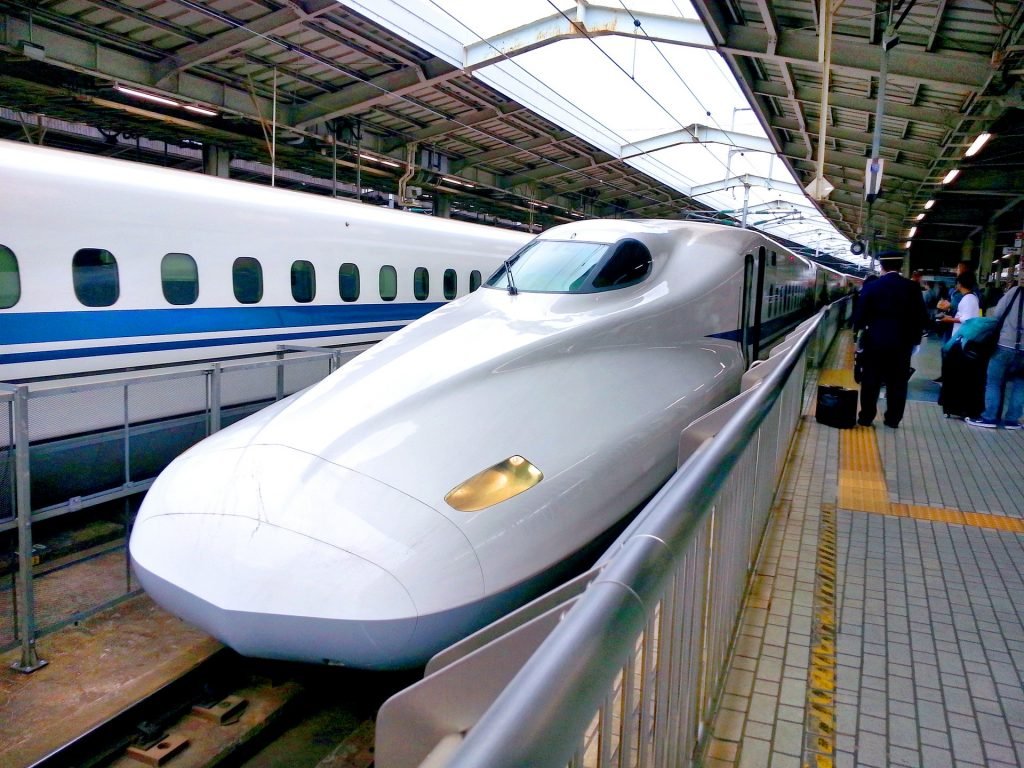
The Bullet Trains run on standard gauge tracks, which are 1.435 meters or 4 ft 8 1⁄2 in narrow gauge. The only exceptions are the lines of the Mini-shinkansen, which are standard gauge but use 1620mm track width to accommodate narrow gauge trains for better compatibility with other rail systems.
The average operating speed of bullet trains is about 210 km/hour; however, some run at speeds of 320 km/hour. The fastest train in the world is the Maglev bullet train “Linimo”, which runs at about 430 km/hour in Japan.
The Shinkansen Operator also provides special “Namasté” (pronounced [na.máːstɛ]) cars for female passengers on certain trains; the cars provide women with an exclusive area to enjoin traditional beauty rituals which require standing, such as putting on makeup. The name of the car is a reference to India, where cosmetics are regularly applied by standing before a mirror. The “Namasté” car is one of the newest features of the bullet train system.
There are three types of Shinkansen cars: Standard, Green, and Gran class. The standard car is inexpensive and can accommodate about 50% of the total number of passengers. Gran Class is the most luxurious and expensive class, offering about 25% more space than standard cars.
Green cars provide more space than standard; they are usually the choice for business travelers.
The Shinkansen also has two dining cars, one on each end of the train, to provide sit-down snacks and drinks for passengers. However, these cars are usually reserved for long-distance travel. For example, the Hodogaya station on the Tokaido line is where a dining car can be caught for a snack between Yokohama and Odawara.
The bullet train fare varies, depending on the class of travel (Standard, Green, or Gran Class), the distance traveled and the age of the traveler.
19. Kiso Valley, Japan
The Kiso Valley is situated in Japan. There are many different paths of varying lengths you can take to see the valley.
The Nakasendo Road is part of what is known as the Kisoji, which runs through the valley. The road was originally built in 716 by Tokugawa Ieyasu, who later became the shogun of Japan.
Much has changed concerning the path since it began many centuries ago. As of today, there are still five original post stations that remain. Post stations were built every few kilometers to accommodate travelers on the long journey through the Kiso Valley. The decoration at each one is truly beautiful.
Travelers who pass through this area today can see how human culture has flourished through the region’s history.
Out of the list of the Best Things To Do in Japan, you can pick and choose which ones you want to cover depending on your preferences and how much time you have available on hand. We’d recommend doing all of them!
Japan, a beautiful country in the East is a must-visit country for travelers curious about Oriental culture. Add these experiences to your bucket list when you visit Japan – ‘The Land of the Rising Sun’!
Read More: Prague: 21 Absolutely Unmissable Things to do in Pretty Czech City
Note: The hours of operation, ticket prices, and admission criteria of museums, parks, etc. may change from time to time. For the most updated information, we recommend checking the official website of the attraction directly prior to your planned visit.
Categories: Asia | Africa | Europe | USA | Australia & New Zealand | France | Germany | India | Italy | Spain | Sports | Switzerland | Travel Tips | UK | Products | Download AI Trip Planner App
Page Contents


